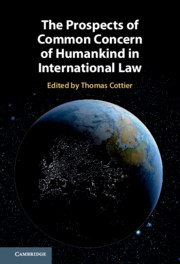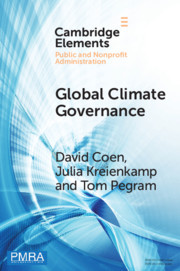Refine search
Actions for selected content:
32 results
Cities as social investment frontrunners: the case of Amsterdam as innovator and welfare stopgap
-
- Journal:
- Journal of Social Policy , First View
- Published online by Cambridge University Press:
- 01 July 2025, pp. 1-17
-
- Article
-
- You have access
- Open access
- HTML
- Export citation
What makes a good lobbyist for the government? Explaining intergovernmental lobbying success
-
- Journal:
- European Political Science Review , First View
- Published online by Cambridge University Press:
- 19 June 2025, pp. 1-17
-
- Article
-
- You have access
- Open access
- HTML
- Export citation
The nexus between welfare rescaling and administrative burden: The case of minimum income provision in Spain
-
- Journal:
- Journal of International and Comparative Social Policy , FirstView
- Published online by Cambridge University Press:
- 28 May 2025, pp. 1-15
-
- Article
-
- You have access
- Open access
- HTML
- Export citation
Democracy through crises: state, regions and the influence of technocracy and expertise in Italy (2008–2020)
-
- Journal:
- Italian Political Science Review / Rivista Italiana di Scienza Politica , First View
- Published online by Cambridge University Press:
- 22 May 2025, pp. 1-15
-
- Article
-
- You have access
- Open access
- HTML
- Export citation
24 - Sustainability Enforcement through Multilevel Financial Tools
- from Part IV - Ensuring Financial Stability and Sustainability
-
-
- Book:
- The Cambridge Handbook of EU Sustainable Finance
- Published online:
- 30 January 2025
- Print publication:
- 06 February 2025, pp 622-640
-
- Chapter
- Export citation
5 - Governing
- from Part II - Enabling Processes
-
- Book:
- Urban Nature
- Published online:
- 14 November 2024
- Print publication:
- 07 November 2024, pp 71-87
-
- Chapter
- Export citation
The role of sustainability knowledge-action platforms in advancing multi-stakeholder engagement on sustainability – ERRATUM
-
- Journal:
- Data & Policy / Volume 5 / 2023
- Published online by Cambridge University Press:
- 25 October 2023, e34
-
- Article
-
- You have access
- Open access
- HTML
- Export citation
The role of sustainability knowledge-action platforms in advancing multi-stakeholder engagement on sustainability
-
- Journal:
- Data & Policy / Volume 5 / 2023
- Published online by Cambridge University Press:
- 16 October 2023, e33
-
- Article
-
- You have access
- Open access
- HTML
- Export citation
Sámi agency in economic development processes in the Norwegian High North
-
- Journal:
- Polar Record / Volume 59 / 2023
- Published online by Cambridge University Press:
- 14 August 2023, e24
-
- Article
-
- You have access
- Open access
- HTML
- Export citation
6 - Laboratories or Showcases? Explaining the Varied Forms of Local Government under Populist Radical Right Mayors
-
- Book:
- Restrained Radicals
- Published online:
- 10 August 2023
- Print publication:
- 10 August 2023, pp 171-207
-
- Chapter
- Export citation
1 - Climate Governance and Federalism
-
-
- Book:
- Climate Governance and Federalism
- Published online:
- 11 May 2023
- Print publication:
- 25 May 2023, pp 1-13
-
- Chapter
-
- You have access
- Open access
- HTML
- Export citation
8 - Climate Governance and Federalism in Germany
-
-
- Book:
- Climate Governance and Federalism
- Published online:
- 11 May 2023
- Print publication:
- 25 May 2023, pp 150-176
-
- Chapter
-
- You have access
- Open access
- HTML
- Export citation
2 - Analysing the EU
- from Part I - Setting the Scene: Origins, Analytical Perspectives and Institutions
-
- Book:
- The Politics of the European Union
- Published online:
- 30 March 2023
- Print publication:
- 20 April 2023, pp 28-45
-
- Chapter
- Export citation
From anticipatory strategies to reactive blame games in multi-level settings: the role of structure and politics in stability and policy change
-
- Journal:
- Journal of Public Policy / Volume 42 / Issue 4 / December 2022
- Published online by Cambridge University Press:
- 27 September 2022, pp. 802-826
-
- Article
-
- You have access
- Open access
- HTML
- Export citation
Soft law and individual responsibility: a review of the Swedish policy response to COVID-19
-
- Journal:
- Health Economics, Policy and Law / Volume 17 / Issue 1 / January 2022
- Published online by Cambridge University Press:
- 10 August 2021, pp. 48-61
-
- Article
-
- You have access
- Open access
- HTML
- Export citation

The Prospects of Common Concern of Humankind in International Law
-
- Published online:
- 04 May 2021
- Print publication:
- 13 May 2021
17 - The Multi-Level Governance Challenge of Climate Change in Brazil
- from Part IV - Sustainability and Climate Change
-
-
- Book:
- The Cambridge Handbook of Environmental Sociology
- Published online:
- 05 November 2020
- Print publication:
- 03 December 2020, pp 285-300
-
- Chapter
- Export citation

Global Climate Governance
-
- Published online:
- 20 November 2020
- Print publication:
- 17 December 2020
-
- Element
- Export citation
Europeanisation on demand: the EU cybersecurity certification regime between market integration and core state powers (1997–2019)
-
- Journal:
- Journal of Public Policy / Volume 41 / Issue 3 / September 2021
- Published online by Cambridge University Press:
- 06 August 2020, pp. 600-631
-
- Article
- Export citation
1 - Architectures of Earth System Governance
-
-
- Book:
- Architectures of Earth System Governance
- Published online:
- 17 April 2020
- Print publication:
- 07 May 2020, pp 1-34
-
- Chapter
- Export citation
